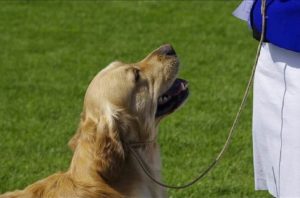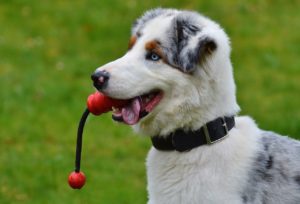
Training your dog is a must in order to have a civilized and well-behaved dog. Dog obedience training serves a greater purpose, just like a pianist needs to practice playing scales long hours before getting to the recital stage. Basic training will set the stage for a balanced dog. Also, it will help you a great deal if any future behaviour problems arise.
If you own a dog, surely you’ve heard of the wondrous dog whisperer, Cesar Millan. Well, his tips can help you a lot during obedience training. But don’t take it too literally, as even Cesar puts it: it’s a lot like dancing. There’s a leader and a follower. It takes consistency and patience. There’s a lot of small steps that form the movement. And ultimately, both partners need to be relaxed so they can flow through the movement.
Does my dog need training?
 Every dog needs training. Begin training as soon as you get your dog. You could take a class, but it’s not necessary; you can do it yourself. And with the right attitude, this can be a great time for both you and your dog and a golden opportunity to bond.
Every dog needs training. Begin training as soon as you get your dog. You could take a class, but it’s not necessary; you can do it yourself. And with the right attitude, this can be a great time for both you and your dog and a golden opportunity to bond.
All you need to master dog obedience training is patience, persistence and tasty treats to reward the desired behaviour. In order to house train your dog and put him or her on a schedule, you first need to be established as his leader. Dog obedience training will make the entire adaption process a lot easier and will help your dog learn these things faster.
The below commands have stood the test of time: they are easy to learn and make the owner’s life a lot easier. So go ahead and have fun with your best friend! Remember, your tone and body language will have a big role in getting your message across.
1. Sit
 This basic command is easy to teach. According to Cesar Millan, it is the best one to start with. So the goal is for your dog to sit and stay there until released. Stand in front of your dog with a treat in one hand. Hold your hand a bit higher than your dog’s head.
This basic command is easy to teach. According to Cesar Millan, it is the best one to start with. So the goal is for your dog to sit and stay there until released. Stand in front of your dog with a treat in one hand. Hold your hand a bit higher than your dog’s head.
Slowly move the treat over your dog’s head, so it’s behind his or her head, over the spine. This movement should cause his nose to point up and his rear to drop. If this doesn’t happen, keep moving the treat all the way to his tail. The instant his rear touches the floor, give him or her the treat and mark the desired behaviour by giving the command ‘sit’.
Once your dog is consistently sitting, wait a few seconds before rewarding. Also, only give the reward while he or she is in the desired position – sitting.
2. Stay
Now, here’s how to keep your dog in the desired position until told otherwise. Start with your dog sitting down, as he is less likely to move. The same goes for lying down. Stand directly in front of your dog and with a serious tone, say “stay”, with your palm in a flat position, almost touching his nose. Slowly, start moving away, keeping eye contact with your dog. Then go back to him and praise him with a nice ‘stay’ and reward him with a treat. Always give the treat and praise your dog when he does what you want him to.
If your dog moves from his stay before you have released the command, gently but firmly put him back in the original spot where he was told to stay in the first place. Increase the time you ask your dog to stay gradually, as well as the distance. You want your dog to successfully complete the task, so if he starts breaking his stays, go back to the distance and duration he was good at.
3. Lay Down
Another traditional dog obedience training favourite. But this command can also be vital as it could help avert dangerous situations such as unsafe road crossings. With your dog facing you, hold a treat right up to his nose and lower it slowly to the floor. If you are lucky, your dog will follow your movement and lie down on his belly, at which point you can reward him and praise him while saying ‘down’.
If your dog is not responding to the food lure, put slight pressure on his shoulder blades, pushing down. Once he reaches the floor, praise him immediately. But do try to avoid physical manipulation, as this should be your last case scenario. After you’ve achieved this, gradually delay the release of the treat by saying ‘stay, stay’ and then give him the treat when you say ‘down’ and praise him for being good. The dog should not move from the position until you have released him, i.e. by saying ‘ok’.
Here’s another useful tip as you don’t want to confuse your dog with obedience training. When he jumps on the sofa, don’t say “down” but use the command ‘off’.
4. Come
Upon hearing this command, your dog should come immediately to you. Also, use the help of hand signal showing your dog to come to you. In order for this command to consistently be successful, your status as the leader of the pack needs to be firmly established. As Cesar explains, the dog is not unhappy because he is the follower. Just like with dancing partners, both are important. Both are having a good time. But it is a necessity for one to be the leader.
With your dog on the leash, about 2m away from you, command him to ‘come’ with a happy tone and pull him quickly to yourself, praising him as soon as he comes closer. As your dog improves, increase the distance. When you feel ready, practice off-leash but in a fenced area, just in case. Do not give him the reward if he doesn’t perform on his own the first time you call. Put the leash back and make him do it 5 times successfully before re-attempting without the leash.
5. Speak
Surely, you don’t want your dog barking up the wrong tree! Teaching your dog to bark on cue is perhaps the most important foundation of a well-behaved dog. First, you need to observe what causes your dog to bark – is it the doorbell? Seeing you with a leash? Or perhaps seeing his treats? Whatever it is, you can use it as a stimulus to teach this command.
So, let’s assume it is the sound of a doorbell. Stand at your front door, give your dog the command to bark and press the doorbell. When your dog barks, give him the treat. Repeat about 5 times. The next stage is to give the command but do not ring the bell. You may have to repeat the command several times to get a bark. If this does not happen, return to the first step and use the doorbell as an aid.
The next step is to try this trick in a different room. Don’t get discouraged if this particular dog obedience trick takes more time. Strangely enough, this can be a difficult transition for many dogs!
6. Yuck
This is one of the reasons why dog obedience training serves a much greater purpose. By teaching your dog to refuse food that he’s not given the permission to eat, you can even save his life. Unfortunately, dogs are likely to eat everything that smells good or just seems tasty! This can be very dangerous, from chicken bones which can be lethal to dogs as they could splinter in their stomach and damage the intestinal tract, all the way to the waste on the streets. Also, you don’t want your dog accepting food from strangers!
By facing your dog, place the treat right in front of his nose. Obviously, he will show interest in the treat immediately. But as soon as he does, it’s your turn to say ‘Yuck’ in a disapproving tone and pull the treat away from him, to the side. The next time, lightly bop him on the nose and repeat the process until he looks away from your hand. You need to watch him closely to reward him at that instant. You must be prepared for small aversions of his eyes that will gradually increase in duration. Release him from the command by saying ‘ok’ or ‘good dog’.
Be patient, it will take time for him to look away! Timing is crucial, so make sure to reward even the slightest glance away! Just be patient, he has to look away eventually! Once excelled, you can add a bit of humour if you want to make your house guests laugh by adding a question before using the command such as ‘Do you like my home cooking?’.
7. Cover Your Eyes
 Once you’ve mastered the basics, you can dare to try a special trick! By teaching your dog this particular obedience trick, there is no doubt he can melt the hardest of hearts – even of those who are not dog lovers. So in order to teach your dog to hide his eyes by placing his paw over them, stick a sticky note to your dog’s muzzle while he’s sitting down. Naturally, he will try to get it off. One swipe should be enough to dislodge the paper. Immediately praise him for good ‘cover’! Then, stick the tape to the centre of his head, as now he will have a harder time removing it. As soon as pokes his head and covers his eyes, praise him. The final step is to use the previously taught command ‘stay’ to make him hold the position.
Once you’ve mastered the basics, you can dare to try a special trick! By teaching your dog this particular obedience trick, there is no doubt he can melt the hardest of hearts – even of those who are not dog lovers. So in order to teach your dog to hide his eyes by placing his paw over them, stick a sticky note to your dog’s muzzle while he’s sitting down. Naturally, he will try to get it off. One swipe should be enough to dislodge the paper. Immediately praise him for good ‘cover’! Then, stick the tape to the centre of his head, as now he will have a harder time removing it. As soon as pokes his head and covers his eyes, praise him. The final step is to use the previously taught command ‘stay’ to make him hold the position.
What could happen is that your dog tries to shake it off. In that case, just use a stickier tape that won’t come off as easily so he will have no other choice than to resort to his paws!
Be firm and consistent and won’t take long before your dog begins to understand. Patience is key. Remember, you are asking a lot of your dog and this might take time. Don’t rush the process.
Using treats as training
 Also, give your dog treats to ease all less-loved activities – i.e. after bathing, brushing, nail clipping and ear-cleansing. This way, he or she will attach a pleasant emotion to this activity and is less likely to riot against it. Your dog will feel happy when he does something good and consequently gets rewarded for it. This is also why Cesar advises to feed your dog after taking a walk, to make him or her work for it and experience the meal as a reward. Overall, a well-trained dog is key to both a well-behaved and happy dog. Dog obedience training will significantly contribute for your dog to be in balance and harmony. So having a well behaved dog ultimately depends on your level of commitment.
Also, give your dog treats to ease all less-loved activities – i.e. after bathing, brushing, nail clipping and ear-cleansing. This way, he or she will attach a pleasant emotion to this activity and is less likely to riot against it. Your dog will feel happy when he does something good and consequently gets rewarded for it. This is also why Cesar advises to feed your dog after taking a walk, to make him or her work for it and experience the meal as a reward. Overall, a well-trained dog is key to both a well-behaved and happy dog. Dog obedience training will significantly contribute for your dog to be in balance and harmony. So having a well behaved dog ultimately depends on your level of commitment.
Our command for you? Now go and practice these commands on your dog! :)









